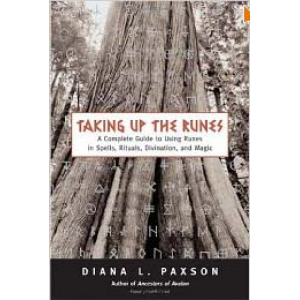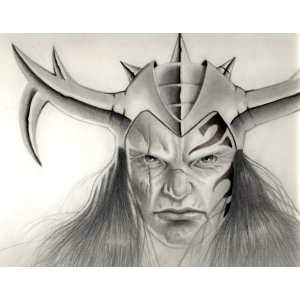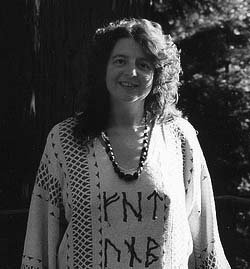
Book: Taking Up The Runes A Complete Guide To Using Runes In Spells Rituals Divination And Magic by Diana Paxson
Although many of us first encountered runes in J.R.R. Tolkien's Lord of the Rings, this sacred alphabet is by no means a fabrication for books or movies. Similar to Hebrew letters in the sense that each symbol contains a meaning that transcends its original function as a letter, the runes are practical, flexible, and effective symbols with a variety of uses.
Today, the best known application of rune lore is divination: chips or stones marked with runes are drawn, cast, or laid out in patterns like tarot cards. In Taking Up the Runes, Paxson delves into the ancient
Historical meaning of each rune and explains their contemporary uses and meanings. We discover that the real power of runes comes from inside ourselves when we find the wisdom and power within each symbol and internalize them.
One of the problems with a lot of books on runes is the lack of originality, followed by the tendency to see runework as another magickal system. This work does none of the above.
Yes, she goes through the meanings of each rune-but in easy to
Understand ENGLISH. While not being afraid to use the old tongues (there are a numbers of quotes from the Norse and other languages), they are not necessary to the text itself. She does summarize a lot of what the better modern runic sources have before giving her own slant on a subject. Additionally she takes the runes in pairs, often using one to shed light on the other. This is a book scholars would not be ashamed to own, but that is useful to newcomers to the runes.
Where this work really departs from previous works is the practical and magickal working. This is firmly situated within the practice of the religious revival, rather than making a neo-magickal order type of work. It has rituals which are for the growth of the group, as well as the individual but which focus more on personal growth than on trying to win the lottery. While no shying away from practical magick, she reminds us that this was not about magick for magick's sake, but was about living for today and within the context of community. She points out that Odin, upon obtaining the runes, promptly began using and teaching them, as opposed to immediately ascending to some transcendent plane.
I believe and hope that this is the first of a new wave of works which focus on practices as part of the religious
Tradition rather than a separate search for power or transcendence. If for no other reason this work would be worth the purchase price. However above that it carries a lot of the lore and mindset that someone starting out in a Norse centered religious practice should have as well as that needed in going beyond the basics. Well Done and well worth having!
Diana Paxson is author of more than a dozen historical novels with strong spiritual themes including The White Raven and The Serpent's Tooth. She is also the coauthor, with Marion Zimmer Bradley, of Priestess of Avalon and has continued the immensely popular Mists of Avalon series on her own.
Buy Diana Paxson's book: Taking Up The Runes A Complete Guide To Using Runes In Spells Rituals Divination And MagicFree eBooks (Can Be Downloaded):
Paul Foster Case - The Early Writings Vol Ii Esoteric Secrets Of Meditation MagicRight - Travel In Spiritual Worlds A Complete Guide On Astral TravelsAnonymous - Thelema A New Spiritual Tradition For A New Age



